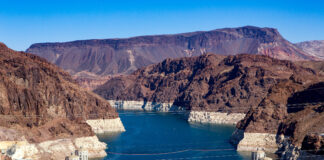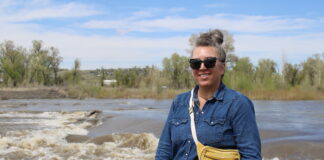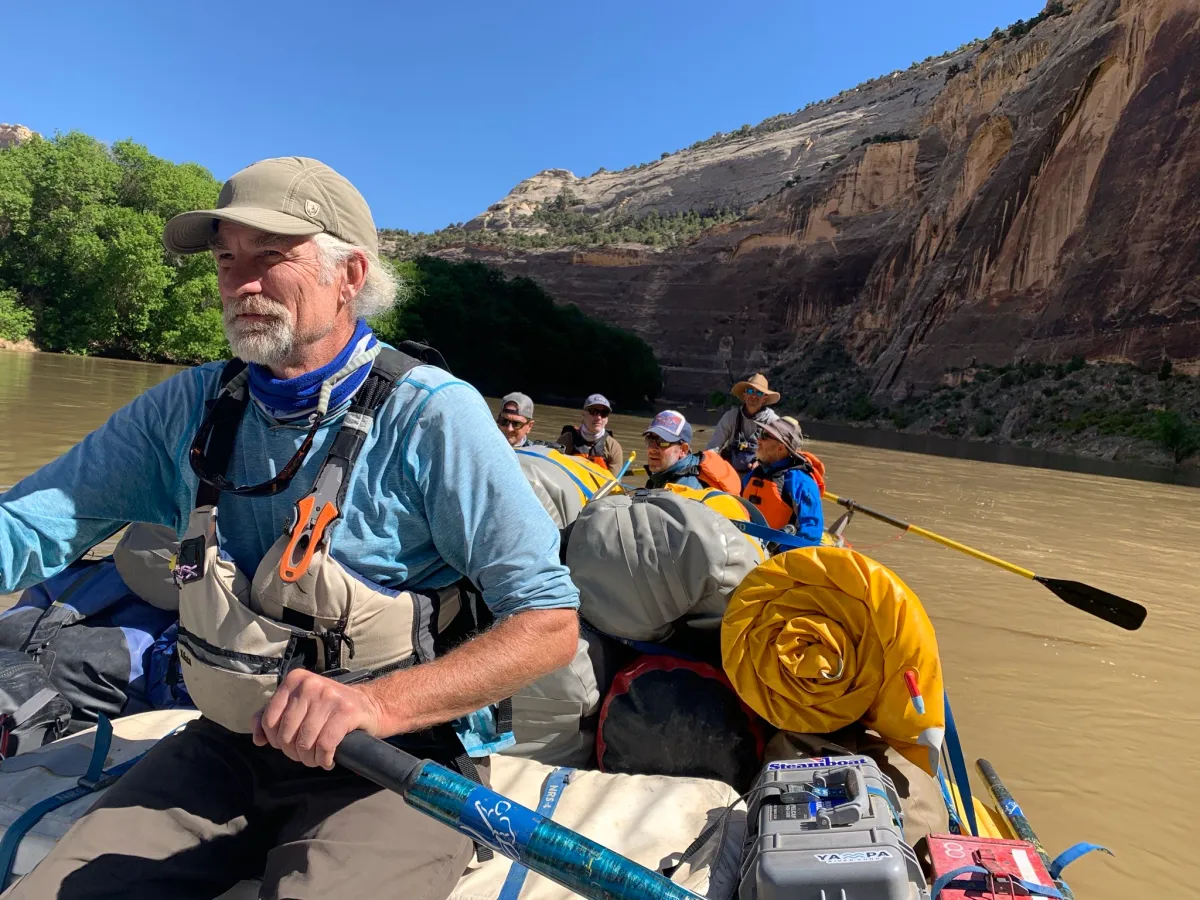
By Heather Sackett
Colorado’s river recreation community is asking for more recognition in the update to the state’s Water Plan.
In a Sept. 30 comment letter addressed to the Colorado Water Conservation Board Director Rebecca Mitchell and Gov. Jared Polis, a group of recreation, environmental conservation organizations and local businesses ask for river recreation to play a more prominent role in the roadmap for Colorado’s water future.
“Adequate flows to sustain recreation and environmental water needs must be a top priority for CWCB,” the letter reads. “As the update notes, climate change and aridification will contribute to significant temperature-driven river flow declines, disproportionately impacting recreation and river health.”
State officials in July released the second iteration of the Colorado Water Plan, a 239-page document that lays out four interconnected areas for action: vibrant communities, robust agriculture, thriving watersheds and resilient planning. The update to the original 2015 plan is a roadmap for how to manage Colorado’s water under future climate change and drought scenarios. CWCB staff said they are currently reviewing the 1,376 comments with about 2,000 observations and suggested revisions they received during the 90-day public comment period, which ended Sept. 30.
In the Colorado water world, recreation usually is lumped together with the environment as a “non-consumptive” use since both seek to keep water in the stream. But signatories to the letter say that grouping overlooks the importance of recreation to the economy.
“We are always talking about environment and recreation together because they are so interconnected, but in doing so we miss out on the larger picture of the importance of recreation and really the economic development aspect of it,” said Hattie Johnson, southern Rockies stewardship director of American Whitewater. “There is special care and special consideration that require a different way of looking at recreation that we feel is still lacking in the update.”
The letter gives six recommendations to better integrate recreation into the Water Plan: reaffirm that water-based recreation is not in conflict with other water uses; include the Colorado Outdoor Recreation Industry Office (OREC) as a collaborating agency; add a CWCB recreation liaison; address recreation flows and temperatures; include recreation in watershed planning; and approach storage and water development in a way that won’t negatively impact flows for recreation.
Despite its contribution to Colorado’s outdoor culture, tourism economy and lifestyle, recreation has struggled to find a foothold in the state’s system of water rights, which was established over a century ago and still reflects the values of that time. Colorado water law prioritizes the oldest water rights, which usually belong to agriculture and cities.
As coal mines close, some communities like Craig are turning toward healthy rivers as a way to transition from extractive industries to an outdoor-recreation-based economy.
“It’s important to note that recreation is a pretty important stream use for a lot of communities on the Front Range and West Slope,” said Bart Miller, healthy rivers program director for Western Resource Advocates. “Just having vibrant rivers running through town not just for people to go and float on, but for businesses and boardwalks and the heart of town for a lot of places.”
The update to the Water Plan recognizes that climate change presents a threat to the long-term viability of water-based outdoor recreation. Some communities like Steamboat Springs, where the Yampa River through town has been closed to recreation in recent summers due to high temperatures exacerbated by low flows, are already feeling the effects. Recreation proponents asked CWCB to address this issue.
“We recommend that the final update include specific actions CWCB will take to address recreation flows, including mitigating summer recreation closures caused by high water temperatures and better quantifying the gap for recreational and environmental flow needs,” the letter reads.
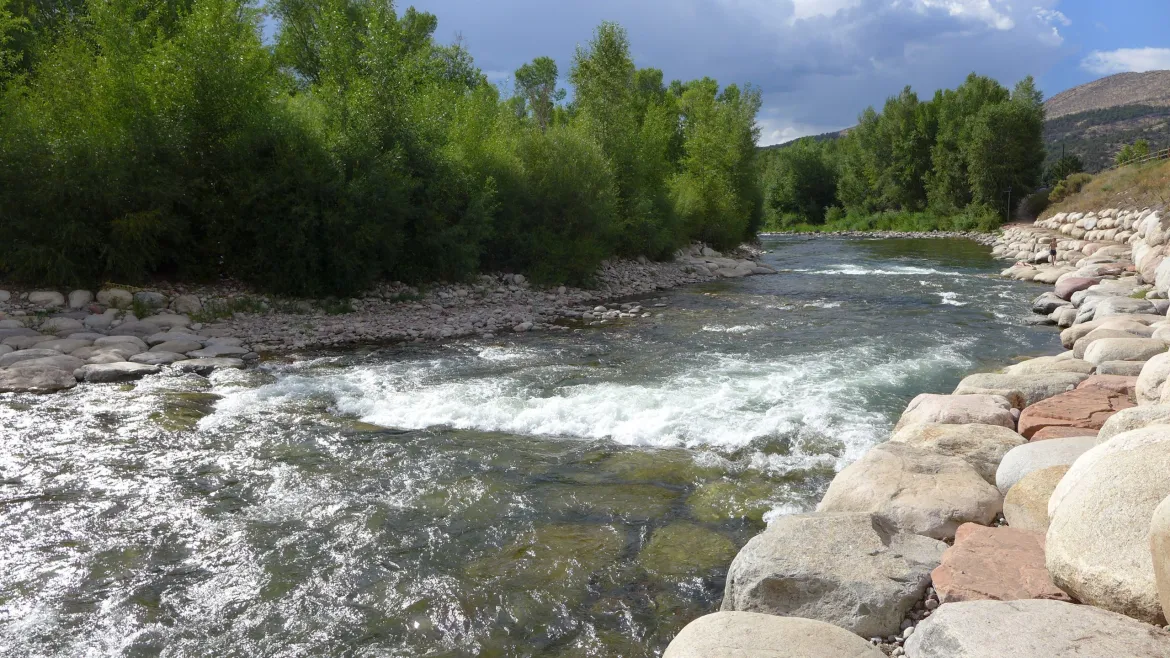
RICDs are imperfect tool
Neither of two recent proposals from recreation proponents — one that would have tied water rights to a natural stream feature and one that would have designated stream reaches for recreation, allowing them to lease water to boost flows — gained wide support from water users or legislators.
Currently the only way to keep water in rivers for boaters is for a local government to get a recreational in-channel diversion (RICD) water right for a human-made wave or whitewater park. But recreation proponents say this method is an imperfect tool. The process of securing the rights can be met with opposition and take years in water court. RICD water rights also sometimes end up making concessions to future water development.
Building the wave features is expensive, meaning a RICD water right may be out of reach for less-affluent communities. Pitkin County has spent more than $3 million on constructing and subsequently fixing its two waves with a RICD water right in the Roaring Fork River near Basalt; the project had an initial budget of $770,000.
The letter also suggests adding a staff position at CWCB to focus on solving the flows challenge and guiding the RICD program.
“A big idea we included was this idea of a recreation liaison,” said Alex Funk, director of water resources and senior counsel at the Theodore Roosevelt Conservation Partnership. “Having someone at CWCB that’s basically your recreation expert, someone that can handle the RICD program, work with the OREC office, someone who is more dedicated to that community and thinking through those things.”
The letter also recommends that recreation be included into watershed planning, specifically by including environmental and recreation flow target recommendations in stream management plans. The 2015 Water Plan had a goal of covering at least 80% of the state’s priority streams with SMPs. And although one of the original goals of these SMPs was to identify flow needs for recreational water uses, only 1% of the plans completed so far did so. In some cases, the SMP process was taken over by agricultural interests, watering down what was supposed to be a tool specifically for the benefit of non-consumptive water uses.
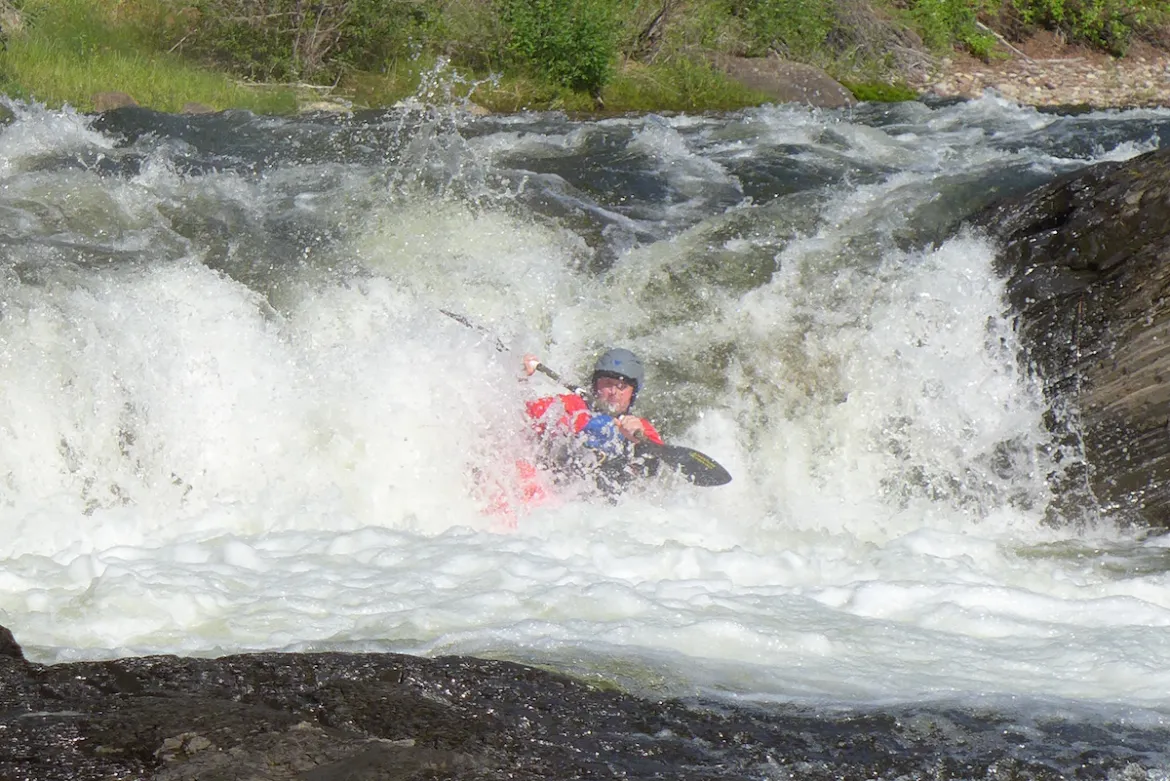
Coalition letter
The comment letter from recreation proponents was an add-on to a more-lengthy submission from the Water for Colorado coalition, which is made up of representatives of environmental advocacy groups including American Rivers, Audubon Rockies, The Nature Conservancy, Trout Unlimited and others.
Recreation was one of three key areas the 40-page letter focused its recommendations on. The letter lays out the criticism that environment and recreation are a secondary focus of the plan and that watershed health is merely “considered” in state water resource planning.
“While we agree that should be a minimum requirement, it doesn’t go nearly far enough,” the letter reads. “Environmental flows and watershed health must also be a coequal goal of state water resource planning itself — not just a secondary consideration.”
The update to the Water Plan lays out projected future “gaps” — the shortage between supply and demand — for agriculture and cities, but not for recreation or the environment.
“There’s not much detail about the volumes of water that are missing or needed,” Miller said. “We’ve got plenty of streams around the state that are short, and we will need to figure out how to improve their health through creative ways of reducing out-of-stream uses.”
CWCB Section Chief for Water Supply Planning Russ Sands said staff appreciates the in-depth feedback from the recreation community.
Sands acknowledged that although there are several locations across Colorado where non-consumptive streamflow needs have been identified, they have not been quantified statewide in the same way as they have been for agricultural or municipal demands. CWCB may revisit addressing those gaps during the next update to the Water Plan, he said.
Sands emphasized the fundamental need for the Water Plan to promote projects that benefit multiple water user groups: agriculture, the environment, recreation and cities.
“Climate change presents a long-term threat to the viability of all sectors of water use,” he said in an emailed statement. “The most promising tool to address this is radical collaboration.”
The final draft of the updated Water Plan is expected by early January.
Aspen Journalism covers water and rivers in collaboration with The Aspen Times. This story ran in the Oct. 14 edition of The Aspen Times, the Glenwood Springs Post-Independent, the Oct. 15 edition of the Summit Daily and the Oct. 18 edition of the Vail Daily.
The Water Desk’s mission is to increase the volume, depth and power of journalism connected to Western water issues. We’re an initiative of the Center for Environmental Journalism at the University of Colorado Boulder. The Water Desk launched in April 2019 with support from the Walton Family Foundation. We maintain a strict editorial firewall between our funders and our journalism.



